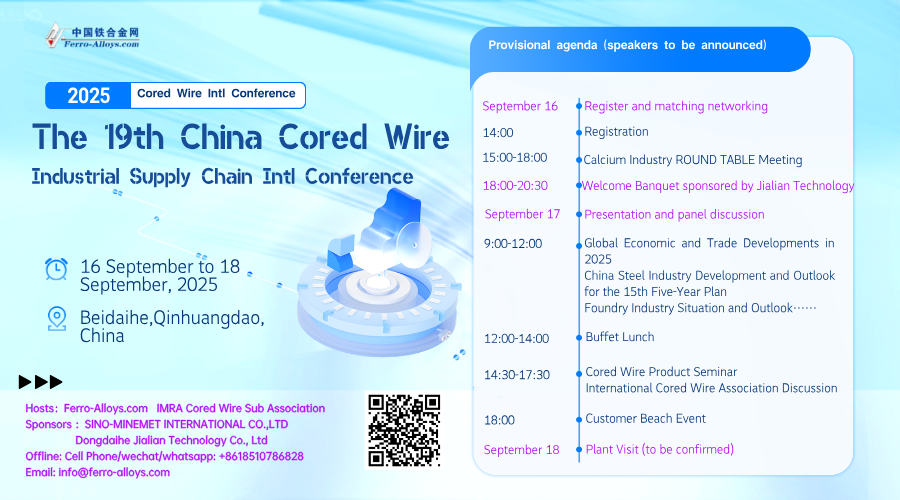Brazil is the silent king of tantalum. Destinations where there are issues surrounding conflict minerals or mine closings and reopenings often dominate the tantalum headlines, but outside of the media spotlight, Brazil is manufacturing 27 percent of the world’s tantalum. Accordingto Merchant Research and Consulting, that is the largest share.
Tantalum in Brazil
Most identified tantalum resources are in Australia and Brazil, according to the US Geological Survey (USGS). Between these two nations, data shows that Brazil has much larger reserves, with 65,000 metric tons (mt) as opposed to Australia’s 51,000 mt.
In 2011, estimated mine production in Australia was only 80 mt while Brazil produced an estimated 180 mt.
Australia has the one of the world’s largest tantalum resources, Wodgina, which is owned byGlobal Advanced Metals. But that mine only operated for part of the year in 2011 and is now shuttered again. As a result, Brazil’s Mibra, which is operated by Companhia Industrial Fluminense, a part of Advanced Metallurgical Group (AMG) (FWB:ADG), is the largest operating tantalum mine.
Companies investing in Brazilian tantalum
In its 2011 annual report, AMG revealed that though its tantalum operations suffered significant disruptions due to record-setting rains in Brazil, strong tantalum prices helped the company achieve improved revenue and margins.
All of the tantalum produced at Mibra is already sold. Last year, the company signed supplyagreements for all of its concentrate through the end of 2012. It will be sold at fixed prices based upon the market price of the metal.
AMG continues to show commitment to improving its Brazilian tantalum operations. In 2011, the company embarked on a mission to increase its tantalum capacity to 400,000 lbs/year. Its annual report cited one of the company’s largest expenditures last year as $7.2 million to expand its tantalum processing facility.
In March, Hoy Frakes was appointed President of AMG. The company announced improving operational efficiencies at its antimony and tantalum mines as one of Frakes’ focuses.
Minsur SA is a major tin producer that purchased the Pitinga mine in Brazil in 2008. Following the close of the deal, Minsur revealed that it planned to spend two years evaluating its new assets with aims to make the operations more efficient and competitive.
One of the company’s goals, according to Fortunato Brescia, Managing Director, was to pursue expansion projects that would increase the participation of niobium and tantalum in revenue.
Production during the past few years has been limited to the processing of tailings. This year, however, the company is set to put its plans into action as it starts production of open pit ore. In December 2011, CEO Lucio Pareja announced plans to quadruple output over the next four years.
Mining in Brazil
Minsur’s decision to the buy the property in Brazil was likely a move that had many scratching their heads.
Brescia said “in the the tin business, it would be natural if we went to Bolivia, where there are a lot of metal reserves, but Brazil showed to be more attractive for being economically and politically more stable than Boliva.”
According to Behre Dolbear, a group of mineral industry advisers, Brazil is still an attractive mining destination. In the company’s annual assessment of countries for mining investment, Brazil ranked fourth.
25 countries were assessed based on seven criteria, including tax policy, corruption, and permitting delays. For each criterion the nations were ranked from one (the worst) to ten (the best). Brazil was not placed among the lowest-ranking countries for any category. However, the nation was among the top ranking countries in two instances.
For its political system, Brazil received an eight, ranking equal to the US and Australia and below only Canada and Chile. Behre Dolbear said its assessment of the nation included looking at its political system and considering whether title to a company’s mineral concession was secure based on the country’s mining law and its prior history of mining operation nationalization.
“The higher-ranking countries are those with well-established democratic systems that possess tested mining legislation and protect against governmental or arbitrary takings of property,” the report said.
Brazil was also among the highest-rated countries for currency stability, ranking nine along with Canada and Australia. The report said that Brazil’s rating did fall a bit, but noted that it was not enough to change the nation’s numerical standing. The minor decline was due to the assessment that Brazil’s currency was significantly overvalued in relation to the US dollar.
Overall, Brazil received a score of 45 out of a possible 70, unchanged from last year. The highest score, held by Australia, was 57.
Given the prevalence of tantalum and Brazil’s positive mining assessment, the nation may be a destination for junior miners to consider.
- [Editor:Yueleilei]



 Save
Save Print
Print Daily News
Daily News Research
Research Magazine
Magazine Company Database
Company Database Customized Database
Customized Database Conferences
Conferences Advertisement
Advertisement Trade
Trade


 Online inquiry
Online inquiry Contact
Contact

Tell Us What You Think